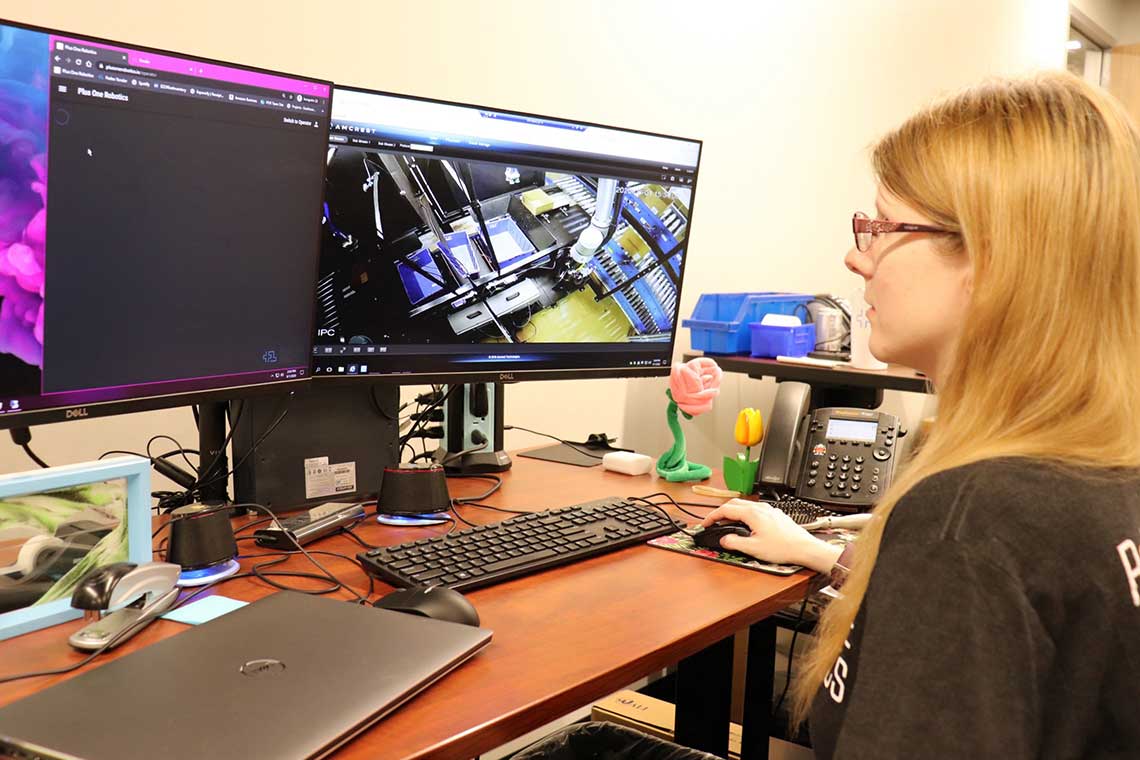
My morning starts with a cup of hot coffee. As I approach my desk a beep rings out as a pick request comes in, and a corresponding screen capture appears below on the monitor. Pick requests occur when a robot needs assistance identifying an item and understanding how to place it inside the tote successfully. This process is known as supervised autonomy. The picture on my screen shows an empty blue tote so I click on the "Empty" option, indicating that there is nothing to pick and to move onto the next tote. On the second monitor I see a live feed of a robot arm located in a client's warehouse, working diligently to pick and place small items to be sent down the packing line. Using Yonder, a uniquely coded visualization system and vacuum-powered suction cups called grippers, the items are picked from the totes one by one and placed inside a box to be shipped to its final destination. While this sort of simple, but crucial movement could be done by a person, repetitive tasks like these can be given to robots. I can control 20 or more robots simultaneously from the Crew Chief Station.
As someone who previously worked in a high-volume fulfillment center for a major, global e-commerce company, I know the daily workflow is suited for those with a more industrial design. All the constant lifting, cutting, twisting, moving, packing and picking takes is ergonomically challenging for humans and over the long term can be detrimental to one's health. With advances in artificial intelligence, we can teach robots to carry out repetitive tasks tirelessly, but the robots are limited by what they already know. That's why we offer supervised autonomy to clients. There are a few scenarios that require this virtual touch of a human. For example, a box may fall open while being picked, spilling the contents inside, which is where I come in! It's a long way down the road for a future without human interaction in factories and warehouses. For now, we collaborate with our machine-based friends in order to keep businesses, both foreign and domestic, running as smoothly as possible.
Having been on both sides of the process, I can find an appreciation for each position. After a long day of manually depalletizing and scanning boxes full of a variety of items, it felt somewhat fulfilling to know that I was a part of a larger process that would be slower without me. However, it's clear that there are more positives to letting a robot take on these tasks so our focus can be on the more valuable contributions in the workplace, less encumbered from the by-products that physical input can create in our own bodies. The muscles and joints that would normally be sore by the end of a 10+ hour shift are automatically transferred to a machine specifically designed for repetitive motion. In my position as a Crew Chief, I can let the robot be my arm, an extension of what would require the endurance of dozens of people, with only a simple click of the mouse. This means human workers can take on more value-added work. With this system, the possibilities of production may come with different problems to solve, but they aren't at the expense of a worker's body and mind. Ultimately, I leave work with a greater sense of accomplishment, amplified with the anticipation of getting to do the same thing the next day — and I'm much happier to attribute sore muscles to a gym workout!
